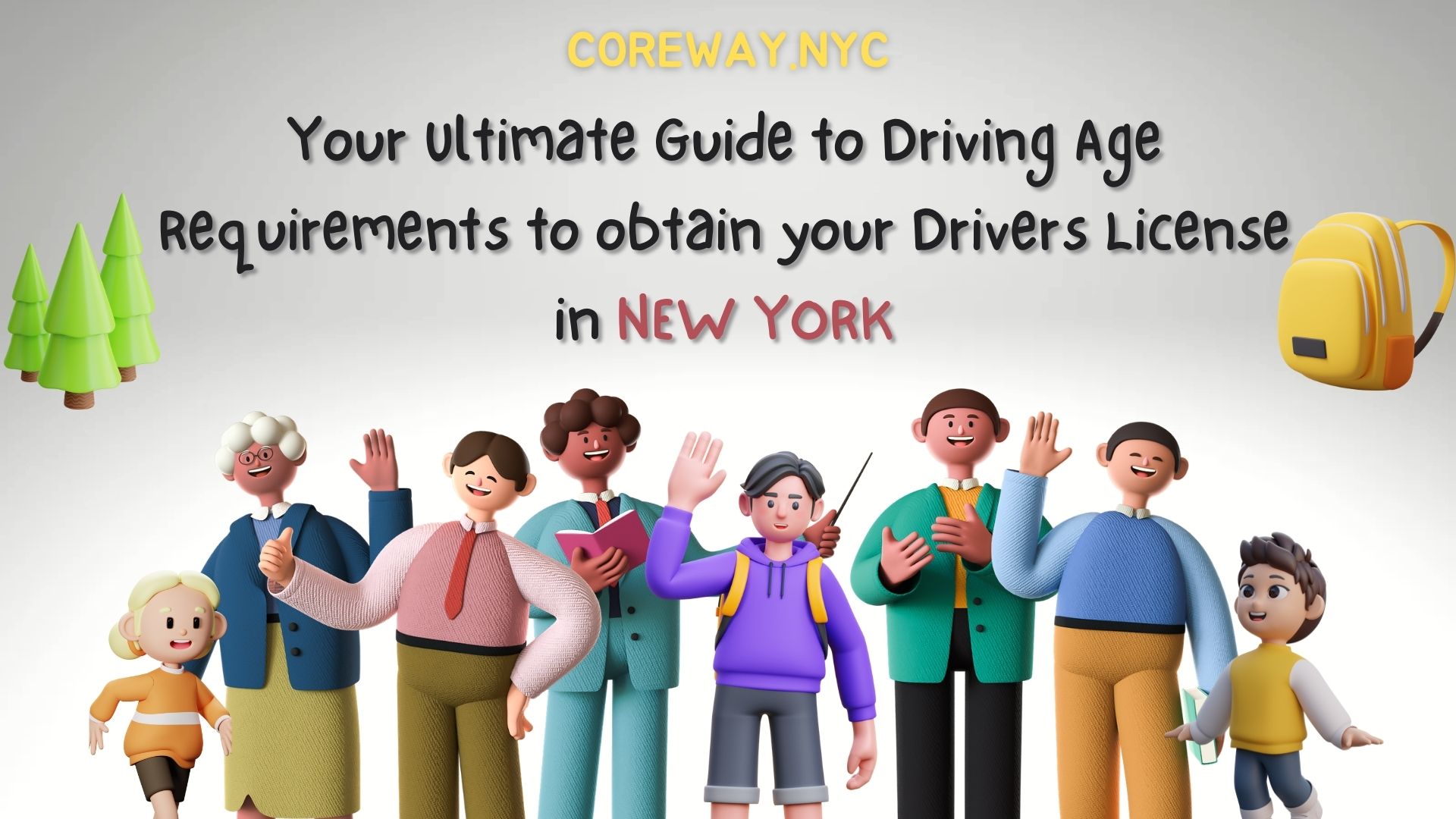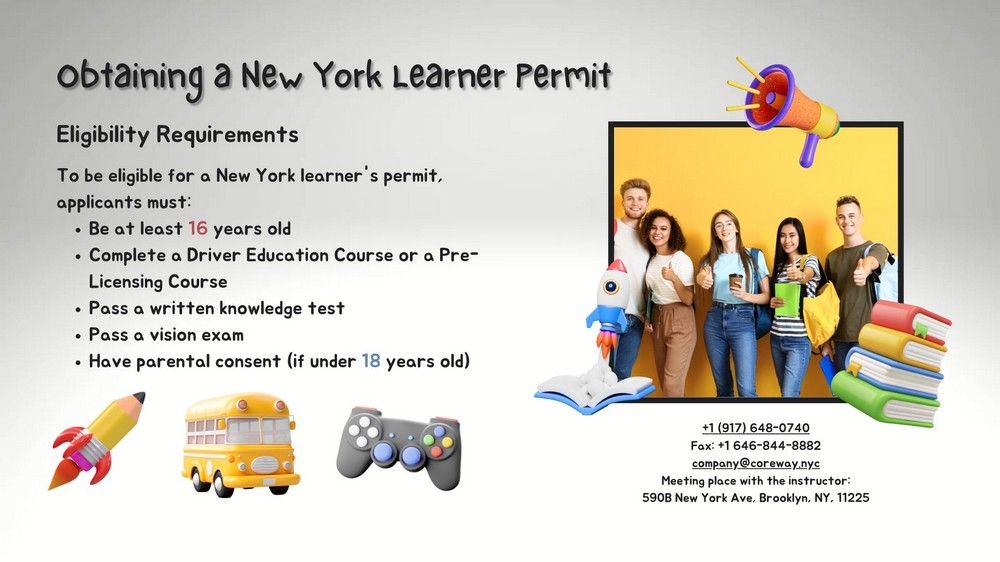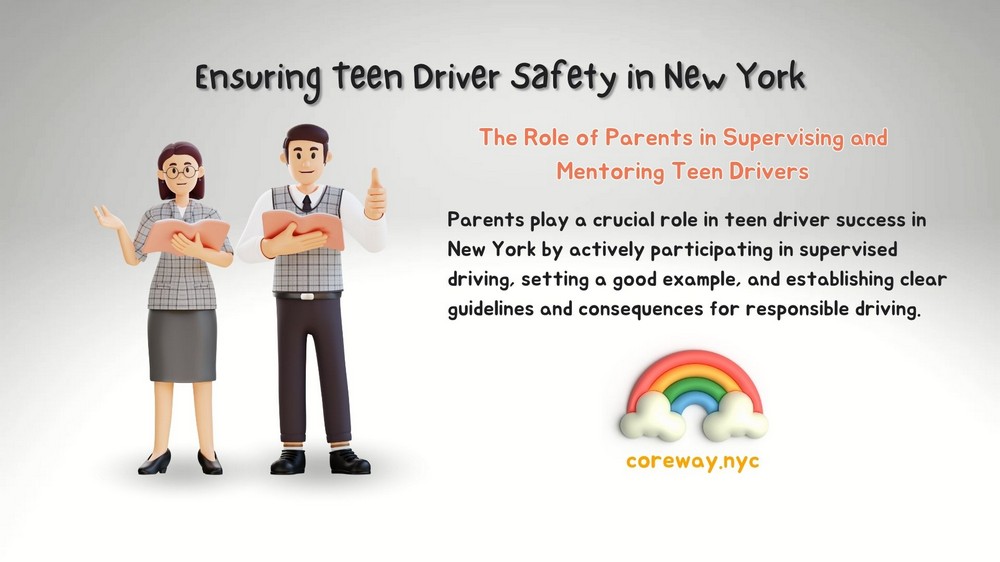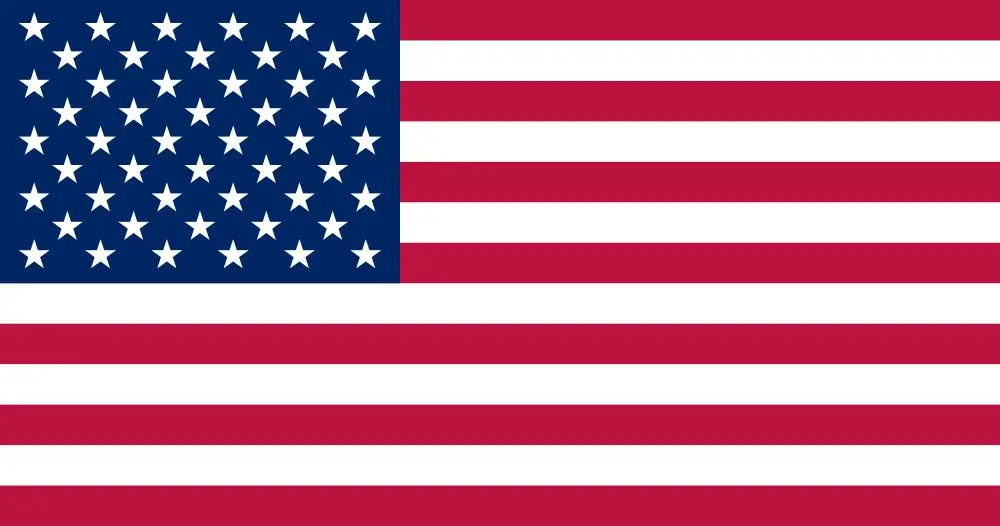Your Ultimate Guide to Driving Age Requirements to obtain your Drivers License in New York

Table of Contents
- New York's Graduated Driver Licensing (GDL) Program
- Obtaining a New York Learner Permit
- Graduating to a New York Junior License (Class DJ)
- Earning a New York Senior License (Class D)
- Special Considerations for Teen Drivers in New York
- Ensuring Teen Driver Safety in New York
- Teen Drivers in New York: Knowledge and Responsibility
For many teenagers, obtaining a driver's license is a rite of passage that symbolizes freedom, independence, and the exciting transition into adulthood. However, with great freedom comes great responsibility, and it's crucial for both teen drivers and their parents to understand the driving age requirements and regulations in their state. In New York, the Graduated Driver Licensing (GDL) program has been instrumental in promoting teen driver safety by gradually introducing driving privileges and responsibilities.
This comprehensive guide will walk you through everything you need to know about driving age requirements in New York, from obtaining a learner's permit to graduating to a junior license and ultimately earning a senior license. We'll explore the steps involved in each stage, the necessary documents, and the restrictions and privileges that come with each license type. By understanding and adhering to these requirements, teen drivers can build a solid foundation for a lifetime of safe and responsible driving.
|
License Type |
Minimum Age |
Key Requirements |
|
Learner's Permit |
16 years old |
Pass written test and vision exam |
|
Junior License |
16 years old |
Hold learner's permit for 6 months, complete supervised driving hours |
|
Senior License |
17 years old (with Driver Education) or 18 years old |
Hold junior license for 6 months, complete Driver Education Course (if under 18) |
Table 1: Overview of New York's Driving Age Requirements
As we navigate the world of driving age requirements in New York, it's essential to keep in mind the importance of gradual skill-building, parental involvement, and open communication. By working together and prioritizing safety, teen drivers can unlock the road to a bright future behind the wheel.
So, let's dive in and explore the ins and outs of New York's driving age requirements, from the first steps of obtaining a learner's permit to the ultimate goal of earning a senior license. Along the way, we'll also discuss important topics such as driving restrictions, the probationary period, and the consequences of traffic violations. Get ready to embark on an informative journey that will empower you to become a safe, responsible, and confident driver in the Empire State.
New York's Graduated Driver Licensing (GDL) Program
New York State has implemented the Graduated Driver Licensing (GDL) program to ensure that teen drivers gain the necessary skills and experience to become safe and responsible drivers. The GDL program has been highly effective in reducing teen driver accidents and fatalities by gradually introducing driving privileges and responsibilities over time.
The GDL program consists of three main stages:
- Learner's Permit: This stage allows teens to practice driving under the supervision of a licensed adult.
- Junior License: This stage grants limited unsupervised driving privileges, subject to certain restrictions.
- Senior License: This stage provides full driving privileges to those who have completed the necessary requirements.
By progressing through these stages, teen drivers can develop their skills and knowledge in a controlled and supervised environment, reducing the risk of accidents and traffic violations.
The Impact of the GDL Program
Since the implementation of the Graduated Driver Licensing (GDL) program, New York has seen a significant decrease in accidents involving teen drivers. According to the New York State Department of Health, the GDL program has resulted in:
- An 80% reduction in crashes involving 16-year-old drivers
- A 60% reduction in crashes involving 17-year-old drivers
- A 40% reduction in crashes involving 18-year-old drivers
These statistics demonstrate the effectiveness of the GDL program in promoting teen driver safety and reducing the risks associated with inexperienced drivers.
|
GDL Stage |
Key Benefits |
|
Learner's Permit |
Allows for supervised driving practice, helping teens develop basic skills |
|
Junior License |
Provides limited unsupervised driving privileges, promoting gradual independence |
|
Senior License |
Grants full driving privileges, acknowledging the completion of necessary requirements |
Table 2: Benefits of Each Stage in the GDL Program
By understanding and adhering to the requirements of the Graduated Driver Licensing (GDL) program, teen drivers in New York can build a strong foundation for a lifetime of safe and responsible driving. The program's success in reducing accidents and fatalities highlights the importance of gradual skill-building and the role of parents and guardians in supervising and guiding their teen drivers through the licensing process.
Call Us Today 9AM-10PM
Or fill out the form 24/7
Our team is here to guide you with promotions, instructor availability, and the best training package for you.
Obtaining a New York Learner Permit

The first step in the journey towards becoming a licensed driver in New York is obtaining a learner's permit. This permit allows teens to practice driving under the supervision of a licensed adult, helping them develop the basic skills and knowledge needed to progress to the next stage of the Graduated Driver Licensing (GDL) program.
Eligibility Requirements
To be eligible for a New York learner's permit, applicants must:
- Be at least 16 years old
- Complete a Driver Education Course or a Pre-Licensing Course
- Pass a written knowledge test
- Pass a vision exam
- Have parental consent (if under 18 years old)
Application Process
To apply for a learner's permit, follow these steps:
- Complete a Driver Education Course or a Pre-Licensing Course.
- Visit a New York State Department of Motor Vehicles (NYS DMV) office.
- Submit the required documents, including proof of identity, date of birth, and Social Security number.
- Pass the written knowledge test and vision exam.
- Pay the learner's permit fee.
- Receive your learner's permit.
Restrictions and Supervised Driving Requirements
Once you have obtained your learner's permit, you must adhere to certain restrictions and requirements:
- You must always be accompanied by a licensed driver who is at least 21 years old.
- You may only drive between 5:00 AM and 9:00 PM.
- You must complete at least 50 hours of supervised driving, including 15 hours of night driving.
- You must maintain a driving log to record your supervised driving hours.
|
Requirement |
Details |
|
Supervised Driving Hours |
Minimum of 50 hours, including 15 hours at night |
|
Driving Log |
Must be maintained to record supervised driving hours |
|
Time Restrictions |
Driving allowed only between 5:00 AM and 9:00 PM |
|
Passenger Restrictions |
Must be accompanied by a licensed driver who is at least 21 years old |
Table 3: Learner's Permit Restrictions and Requirements
By following these restrictions and requirements, teen drivers can gain valuable experience and skills while minimizing the risks associated with inexperienced driving. The learner's permit stage is crucial in laying the foundation for safe and responsible driving habits that will serve teens well throughout their driving careers.
Graduating to a New York Junior License (Class DJ)
After holding a learner's permit for at least 6 months and completing the required supervised driving hours, teen drivers in New York can take the next step in the Graduated Driver Licensing (GDL) program by applying for a junior license, also known as a Class DJ license.
Eligibility Requirements
To be eligible for a New York junior license, applicants must:
- Be at least 16 years old
- Have held a learner's permit for a minimum of 6 months
- Have completed at least 50 hours of supervised driving, including 15 hours at night
- Have no traffic violations or license suspensions during the learner's permit period
- Pass a road test
Benefits of a Driver Education Course
While not mandatory, completing a Driver Education Course offers several benefits for teen drivers seeking a junior license:
- Reduces the minimum holding period for a learner's permit from 6 months to 3 months
- Allows for a senior license to be obtained at 17 years old instead of 18
- Provides valuable knowledge and skills for safe driving practices
Applying for a Junior License
To apply for a junior license, follow these steps:
- Schedule and pass a road test at a New York State Department of Motor Vehicles (NYS DMV) office.
- Submit the required documents, including a completed MV-262 form (Certification of Supervised Driving) and proof of completion of a Driver Education Course (if applicable).
- Pay the junior license fee.
- Receive your junior license.
Junior License Restrictions
Junior license holders must adhere to certain restrictions based on the region in which they drive:
|
Region |
Unsupervised Driving |
Passenger Limitations |
Night Driving Restrictions |
|
New York City (5 boroughs) |
Not allowed |
N/A |
N/A |
|
Long Island (Nassau and Suffolk counties) |
Allowed between 5:00 AM and 9:00 PM |
No more than 1 passenger under 21, unless family members |
Not allowed between 9:00 PM and 5:00 AM |
|
Upstate New York (all other counties) |
Allowed between 5:00 AM and 9:00 PM |
No more than 1 passenger under 21, unless family members |
Allowed between 9:00 PM and 5:00 AM only for work or school purposes |
Table 4: Junior License Restrictions by Region
It is essential for junior license holders to understand and adhere to these restrictions to ensure their safety and the safety of others on the road. Violating these restrictions can result in traffic violations, license suspensions, or even license revocations.
By graduating to a junior license, teen drivers in New York gain more independence and driving privileges while still being subject to certain limitations. This stage of the GDL program allows teens to continue developing their driving skills and knowledge in a controlled environment before progressing to the final stage of the licensing process.
Earning a New York Senior License (Class D)
The final stage of the Graduated Driver Licensing (GDL) program in New York is obtaining a senior license, also known as a Class D license. This license grants full driving privileges to teen drivers who have successfully completed the necessary requirements and demonstrated their ability to drive safely and responsibly.
Eligibility Requirements
To be eligible for a New York senior license, applicants must meet one of the following criteria:
- Be at least 18 years old and have held a junior license for a minimum of 6 months
- Be at least 17 years old, have held a junior license for a minimum of 6 months, and have completed a Driver Education Course
Upgrading from a Junior License to a Senior License
To upgrade from a junior license to a senior license, follow these steps:
- Ensure that you meet the eligibility requirements mentioned above.
- Visit a New York State Department of Motor Vehicles (NYS DMV) office.
- Submit the required documents, including your junior license and proof of completion of a Driver Education Course (if applicable).
- Pay the senior license fee.
- Receive your senior license.
Removing Restrictions and Gaining Full Driving Privileges
Upon obtaining a senior license, teen drivers in New York are no longer subject to the restrictions associated with junior licenses. They gain full driving privileges, which include:
- The ability to drive unsupervised at any time of day or night
- No passenger limitations
- The freedom to drive in all regions of New York State
|
License Type |
Unsupervised Driving |
Passenger Limitations |
Night Driving Restrictions |
|
Junior License |
Restricted based on region and time of day |
No more than 1 passenger under 21, unless family members |
Restricted based on region and purpose of driving |
|
Senior License |
Allowed at all times |
No restrictions |
No restrictions |
Table 5: Comparison of Junior License and Senior License Privileges
Obtaining a senior license is a significant milestone for teen drivers in New York, as it marks the completion of the GDL program and acknowledges their readiness to assume full responsibility for their driving. However, it is crucial for newly licensed drivers to remember that the learning process does not end here. They must continue to practice safe driving habits, obey traffic laws, and remain vigilant on the road.
As teen drivers enjoy their newfound freedom and independence, they should also keep in mind the importance of maintaining a clean driving record. Traffic violations, license suspensions, and other infractions can have serious consequences, including increased insurance rates, fines, and even the loss of driving privileges.
By successfully completing the Graduated Driver Licensing (GDL) program and earning a senior license, teen drivers in New York demonstrate their commitment to safe and responsible driving. This achievement sets the stage for a lifetime of confident, skilled, and conscientious driving.
Special Considerations for Teen Drivers in New York
While the Graduated Driver Licensing (GDL) program provides a structured path for teen drivers to gain experience and skills, there are several additional considerations that young drivers and their parents should keep in mind.
Probationary Period and Consequences of Violations
All newly licensed drivers in New York, regardless of age, are subject to a 6-month probationary period. During this time, drivers must be particularly cautious, as traffic violations can lead to serious consequences:
- Speeding, reckless driving, following too closely, or any two other moving violations during the probationary period will result in a 60-day license suspension.
- Any additional violations during the probationary period may lead to license revocation for at least 6 months.
It is crucial for teen drivers to understand the importance of maintaining a clean driving record during this critical time.
Out-of-State Driving with a New York Learner Permit or Junior License
Teen drivers with a New York learner permit or junior license may be allowed to drive in other states, depending on the specific regulations of the state they are visiting. However, they must adhere to the restrictions and requirements of their New York license, as well as any additional rules imposed by the other state.
Before driving out-of-state, teen drivers should research the specific requirements and restrictions of the state they plan to visit to ensure compliance with all applicable laws.
Driving in New York with an Out-of-State Permit or License
Teen drivers who hold a learner permit or junior license from another state may be allowed to drive in New York, provided they follow the restrictions and requirements of their home state's license, as well as the GDL rules specific to New York.
However, it is important to note that drivers under the age of 16 are not permitted to drive in New York, regardless of their out-of-state permit or license status.
|
Situation |
Requirements |
|
NY Permit/License Driving Out-of-State |
Follow NY restrictions and other state's laws |
|
Out-of-State Permit/License Driving in NY |
Follow home state's restrictions and NY GDL rules |
|
Under 16 with Out-of-State Permit/License |
Not allowed to drive in NY |
Table 6: Out-of-State Driving Considerations
Maintaining Good Grades and Academic Standing
In New York, teen drivers who hold a learner permit or junior license must maintain good academic standing to continue enjoying their driving privileges. The state requires these young drivers to submit a Certificate of School Attendance (MV-285) or a Student Certificate of Completion (MV-285A) to the New York State Department of Motor Vehicles (NYS DMV) to prove their compliance with educational requirements.
Failing to meet these academic standards may result in the suspension of a teen's driving privileges until they can demonstrate satisfactory progress in their studies.
By understanding and adhering to these special considerations, teen drivers in New York can ensure that they are operating within the bounds of the law and taking the necessary steps to maintain their driving privileges. Parents and guardians play a crucial role in guiding and supporting their teen drivers through this process, helping them to develop into safe, responsible, and well-informed motorists.
Call Us Today 9AM-10PM
Or fill out the form 24/7
Our team is here to guide you with promotions, instructor availability, and the best training package for you.
Ensuring Teen Driver Safety in New York

As teen drivers navigate the complexities of the Graduated Driver Licensing (GDL) program and take on the responsibilities of operating a motor vehicle, it is essential to prioritize safety above all else. Parents, guardians, and driving instructors play a vital role in guiding and supporting teen drivers through this process, helping them develop the skills, knowledge, and attitudes necessary for a lifetime of safe driving.
The Role of Parents in Supervising and Mentoring Teen Drivers
Parental involvement is critical to the success of teen drivers in New York. Parents and guardians should:
- Actively participate in the supervised driving process, providing guidance and feedback to help teens develop their skills
- Set a good example by consistently demonstrating safe driving behaviors and adhering to traffic laws
- Establish clear guidelines and consequences for driving privileges, ensuring that teens understand the importance of responsible driving
By taking an active role in their teen's driving education, parents can help instill the habits and attitudes that will serve their young drivers well for years to come.
Encouraging Safe Driving Habits and Responsible Decision-Making
Teen drivers in New York can prioritize safety by adopting the following practices:
- Always wear a seat belt and ensure that all passengers do the same
- Obey posted speed limits and adjust driving speed based on weather and road conditions
- Maintain a safe following distance and avoid tailgating
- Minimize distractions by avoiding cell phone use, eating, or other non-driving activities while behind the wheel
- Never drive under the influence of alcohol, drugs, or medications that may impair driving ability
- Plan ahead to allow sufficient time for travel, avoiding the need to rush or engage in risky driving behaviors
|
Safe Driving Practice |
Benefit |
|
Wearing seat belts |
Reduces risk of injury or death in the event of a crash |
|
Obeying speed limits |
Allows for better control of the vehicle and more time to react to hazards |
|
Minimizing distractions |
Helps maintain focus on the road and reduces the risk of accidents |
|
Planning ahead |
Avoids the need to rush or engage in risky driving behaviors |
Table 7: Safe Driving Practices and Their Benefits
Resources for Further Information and Support
Teen drivers and their parents in New York can access a wealth of resources to support their journey through the GDL program and beyond. Some valuable sources of information and support include:
- The New York State Department of Motor Vehicles (NYS DMV) website, which provides detailed information on licensing requirements, restrictions, and the GDL process
- Local driver education programs, which offer comprehensive training and guidance for teen drivers
- Community organizations and advocacy groups that promote teen driver safety and provide resources for young motorists and their families
- Online forums and support groups where teen drivers and their parents can connect with others, share experiences, and seek advice
By leveraging these resources and maintaining open lines of communication, teen drivers and their parents can work together to ensure a safe, successful, and rewarding driving experience.
Prioritizing teen driver safety is a collaborative effort that requires the involvement of young drivers, their parents, and the wider community. By understanding the driving age requirements in New York, adhering to the principles of the Graduated Driver Licensing (GDL) program, and actively promoting safe driving habits, we can help ensure that our teen drivers are well-prepared for the challenges and responsibilities of the road ahead.
Teen Drivers in New York: Knowledge and Responsibility
Navigating the driving age requirements in New York and the Graduated Driver Licensing (GDL) program can seem daunting for teen drivers and their parents. However, by understanding the process, adhering to the restrictions and requirements, and prioritizing safety, young motorists can successfully develop the skills and knowledge needed to become confident, responsible drivers.
The journey from learner's permit to junior license and ultimately to a senior license is designed to gradually introduce teen drivers to the complexities of operating a motor vehicle, while providing a supportive framework for growth and learning. By actively engaging in supervised driving, completing driver education courses, and maintaining a clean driving record, teen drivers demonstrate their commitment to safe and responsible driving practices.
As parents, guardians, and members of the community, it is our collective responsibility to guide and support our teen drivers through this process. By setting a positive example, maintaining open lines of communication, and leveraging the resources available to us, we can help ensure that our young motorists are well-prepared for the challenges and rewards of the road ahead.
Empowering teen drivers in New York through knowledge, skill-building, and a focus on responsibility is essential for creating a generation of safe, confident, and conscientious motorists. By working together and prioritizing safety, we can help our teen drivers unlock the freedom and independence that comes with earning a driver's license, while also ensuring that our roads and communities remain safe for all.
Call Us Today 9AM-10PM
Or fill out the form 24/7
Our team is here to guide you with promotions, instructor availability, and the best training package for you.
Frequently Asked Questions
-
What is the minimum age to obtain a learner's permit in New York?
The minimum age to obtain a learner's permit in New York is 16 years old.
-
How long must a teen driver hold a learner's permit before applying for a junior license?
A teen driver must hold a learner's permit for at least 6 months before applying for a junior license, unless they have completed a Driver Education Course, which reduces the holding period to 3 months.
-
What are the restrictions for a junior license holder in New York City?
Junior license holders are not allowed to drive unsupervised in New York City (the 5 boroughs) under any circumstances.
-
How many hours of supervised driving are required before applying for a junior license?
Before applying for a junior license, teen drivers must complete at least 50 hours of supervised driving, including 15 hours of night driving.
-
Can a teen driver with a junior license drive unsupervised in Long Island?
Yes, a teen driver with a junior license can drive unsupervised in Long Island (Nassau and Suffolk counties) between 5:00 AM and 9:00 PM, but they cannot carry more than one passenger under 21 years old, unless they are immediate family members.
-
At what age can a teen driver obtain a senior license in New York?
A teen driver can obtain a senior license at 18 years old, or at 17 years old if they have completed a Driver Education Course and have held a junior license for at least 6 months.
-
What is the purpose of the Graduated Driver Licensing (GDL) program in New York?
The purpose of the GDL program is to gradually introduce driving privileges to teen drivers, allowing them to gain experience and skills in a controlled environment before obtaining full driving privileges.
-
What are the consequences of receiving traffic violations during the probationary period?
Receiving traffic violations during the probationary period can result in license suspension or revocation, depending on the number and severity of the violations.
-
Can a teen driver with a New York learner's permit or junior license drive in other states?
A teen driver with a New York learner's permit or junior license may be allowed to drive in other states, depending on the specific regulations of the state they are visiting. They must adhere to the restrictions and requirements of their New York license, as well as any additional rules imposed by the other state.
-
What is the importance of maintaining good grades for teen drivers in New York?
Teen drivers who hold a learner's permit or junior license must maintain good academic standing to continue enjoying their driving privileges. Failing to meet academic standards may result in the suspension of their driving privileges until they can demonstrate satisfactory progress in their studies.
 English
English Spanish
Spanish 

